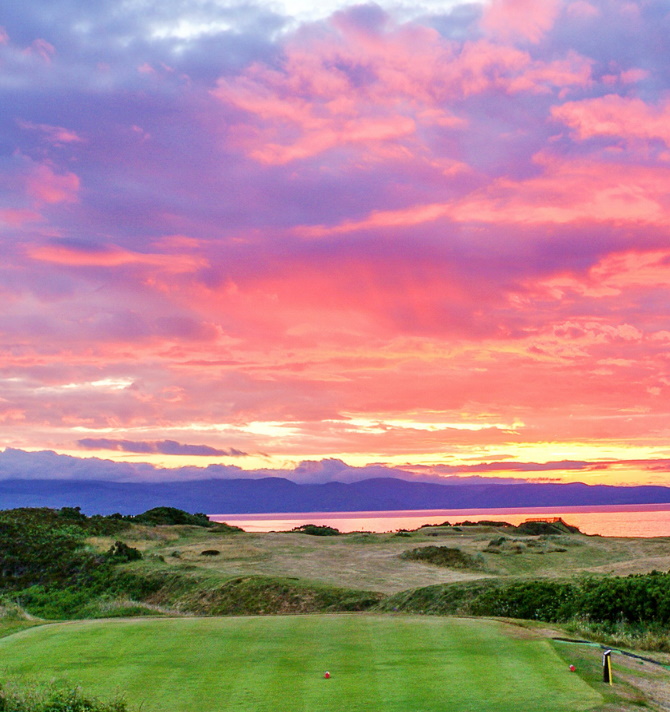In July 2015 on the Old Course at St Andrews, the curtain came down on one of links golf’s greatest modern careers. At the venerable age of 65, five time Open champion, and 3 time senior champion too, Tom Watson stood on the Swilcan Bridge in the half light of a gathering gloom before marching up the 18th for the final time. The lights had burned brightly in the bay window of the R&A’s headquarters that overlook the green. Members (and it should be acknowledged Matt Kuchar and Graeme McDowell too) lined up to welcome him back. Now this isn’t another eulogy to Tom, but rather a comment on the fact that this happened at half past nine in the evening. You see, the ‘twilight round’ is a particularly rich nugget in Scottish links culture.
Reflecting on that evenings closing round the Daily Telegraph described it as;
“deliciously indulgent – and a peculiarly Scottish – pleasure. For summer golf here is traditionally an evening game. Indeed, in weeks when the Open is not in town, the St Andrews locals tend not to allow tourists even to tee off between 5pm and half past six, so that they can bathe in the strangely permissive enjoyment of golf in the gloaming. Even at 10pm – there is more than enough light in the sky to read the line of your final putt.”
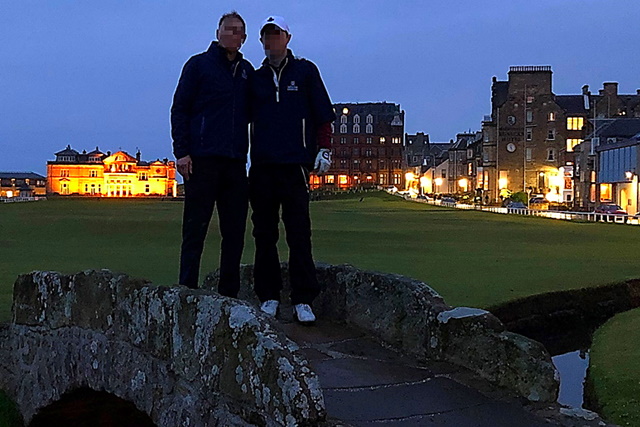
The Old Course on a dark time (very)
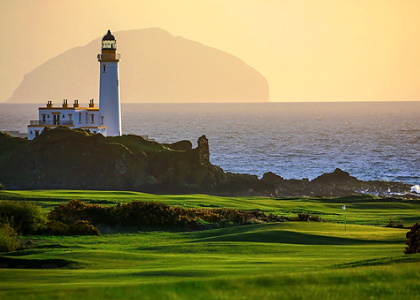
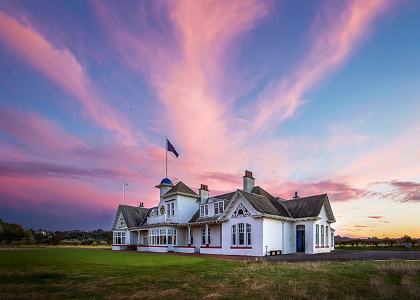
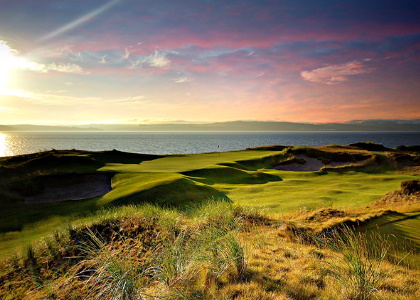

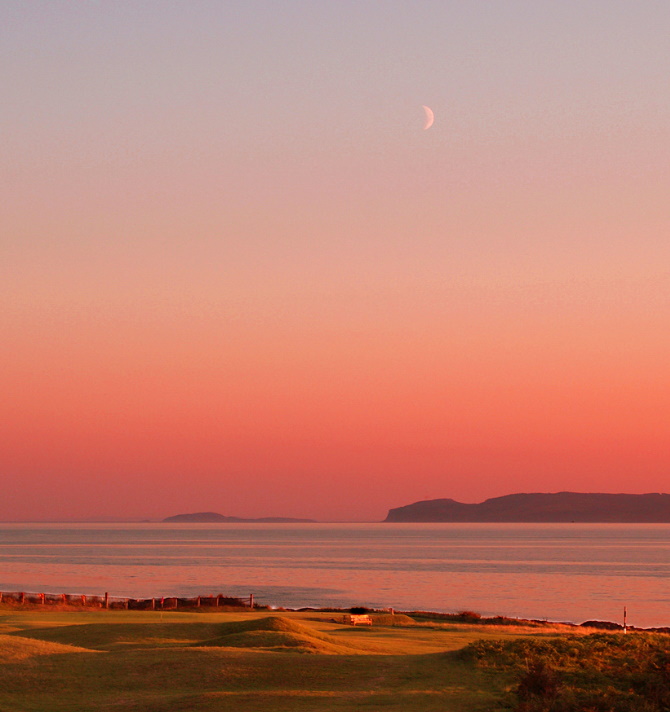
Shiskine
Words such as tranquillity, serenity, and peacefulness readily come to mind. There is something uniquely calming about a links course bathed in the retreating summer glow of a receding sun. Long shadows are cast across the fairways. The subtle contours are accentuated as hollows appear deeper and darker and crests lighter, as they catch the fading illumination. Silhouettes are thrown into starker relief be their distinctive shaping, be it buildings, headlands, or skylines out at sea. If you’re lucky enough to catch such an experience in its true majesty, you could be treated to an explosion of colour as the sky catches fire, and the water below acts as natures ultimate mirror. It’s not just colour though, even the screech of a seagull reaffirms that nature’s conducting this symphony. Shangri-la.
Somewhat counter intuitively given that it’s the most southerly of Scotland’s major golf playing regions, the Ayrshire coast has a well won reputation. The sun sets in the west, and that means out at sea. The Isle of Arran and Ailsa Craig provide a hint of drama. Turnberry, Dundonald, and the Gailes courses won’t disappoint. Courses with elevation can also become dramatic in fading light. The Castle Course is probably the pick of the St Andrews family. Here you’re greeted with extended vistas back into the town below. The harbour is also in full view and becomes symbolic of a safe haven against the gathering gloom. The distinctive ancient skyline is also thrown into relief, and of course the expanse of sea to the east.
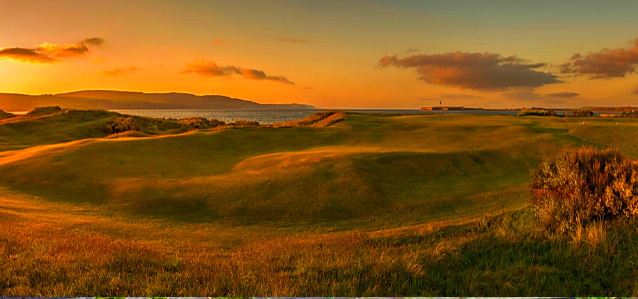
Fortrose & Rosemarkie
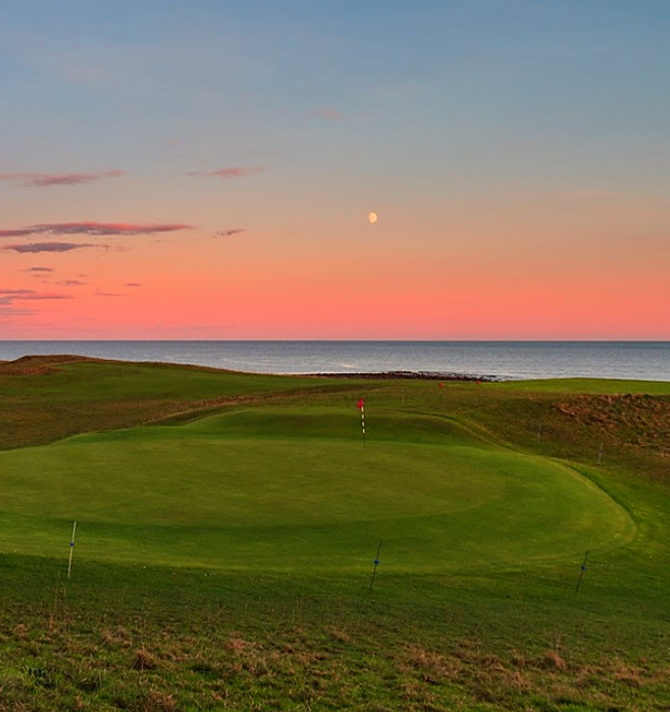
Brora 18th.
At 57.8800° N, Royal Dornoch can even play up until 11 o’clock at the height of summer. You’re on the equivalent of somewhere between Sitka and Juneau in southern Alaska. At Nairn Dunbar they have a charity event called the ‘Longest day challenge’. It tees off at 01.00 in the morning and finishes at 23.00 (when it becomes too dark). They routinely play five courses in the 21 hours or so of light.
Courses like Dornoch played in natural bays can often cast shadows and bend light. Cruden Bay on the Aberdeenshire coast is another candidate, and is leant further dramatic impact by the ruin of Slains Castle. Gullane is another dramatic links that looks out across Aberlady Bay and the Firth of Forth, towards the skyline of Edinburgh.
Faraway Fairways always try and treat you to at least one twilight golf round where we can, it’s a uniquely Scottish preference and you really ought to play one to experience the inner-calming . We called it Shangri La, which naturally sent us to the Oxford English Dictionary for lexicographical insurance purposes;
“Imaginary earthly paradise – the name of a Tibetan utopia”
Well there’s nothing imaginary about this Shangri-La, and it’s Scottish, not Tibetan
